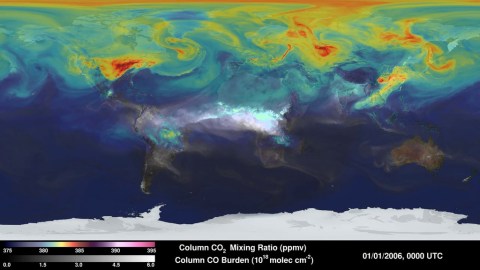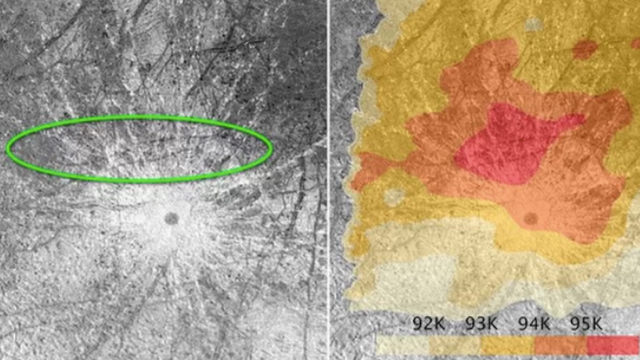Trump admin scraps NASA program that tracks global greenhouse gases

NASA’s Carbon Monitoring System (CMS) has for years helped scientists track the global flow of carbon dioxide by piecing together disparate sets of observations into high-resolution models. In addition to furthering our understanding of Earth’s climate, these models illustrate which policies aimed at reducing greenhouse gases are actually effective.
Now, the Trump administration is quietly bringing the $10-million-a-year CMS program to an end.
NASA spokesperson Steve Cole told Sciencethat the program, which will continue until its existing grants run out, was the victim of “budget constraints and higher priorities within the science budget.”
Some experts say scrapping the CMS will put the U.S. at a disadvantage.
“In the long term, dismantling the Carbon Monitoring System will adversely affect our ability to track flows of carbon through our land, oceans, and atmosphere,” climate scientist Rachel Licker told the BBC. “Being able to better track carbon is critical to evaluating efforts and policies aimed at limiting global warming and its impacts.”
The move comes at an inopportune time for climate scientists.
In April, the average concentration of carbon dioxide in the atmosphere reached the highest level the world has seen in 800,000 years, according to the Mauna Loa Observatory in Hawaii. To put the rate of progression in perspective: CO2 concentrations were around 280 parts per million in 1880, while last month they exceeded an average of 410 parts per million—an increase of 46 percent.
Not all of NASA’s climate-related projects are coming to an end, as Steve Cole, a spokesman for the agency, told the BBC:
“The winding down of this specific research program does not curb NASA’s ability or commitment to monitoring carbon and its effects on our changing planet… In fact, Gedi, a new ecosystem carbon-monitoring instrument, is set to launch to the International Space Station this summer.”
Atmospheric CO2 set a new record last month: 410PPM pic.twitter.com/eZCakkHnEP
— Climate Central (@ClimateCentral) May 4, 2018
It’s not exactly surprising the current administration is scrapping the CMS. In 2017, President Donald Trump signed a new space directive that effectively transformed the way NASA allocates funding.
“The directive I am signing today will refocus America’s space program on human exploration and discovery,” said President Trump. “It marks a first step in returning American astronauts to the Moon for the first time since 1972, for long-term exploration and use. This time, we will not only plant our flag and leave our footprints—we will establish a foundation for an eventual mission to Mars, and perhaps someday, to many worlds beyond.”
The president has also been waging a broad campaign against efforts to curb climate change, most notably in his rejection of the Paris climate accord last year. What’s more, Trump recently picked former congressman Jim Bridenstine to lead NASA, a man who’s been called a “climate change denier” (though he said humans are contributing to climate change in his nomination hearing), and who in 2013 demanded an apology from then President Barack Obama for “gross misallocation” of research funds toward climate change.
In any case, climate mapping research will continue without the CMS, though likely in decreasing part by the U.S. George Hurtt, a carbon cycle researcher at the University of Maryland in College Park and leader of the CMS science team, told Science:
“The topic of climate mitigation and carbon monitoring is maybe not the highest priority now in the United States. But it is almost everywhere else.”





